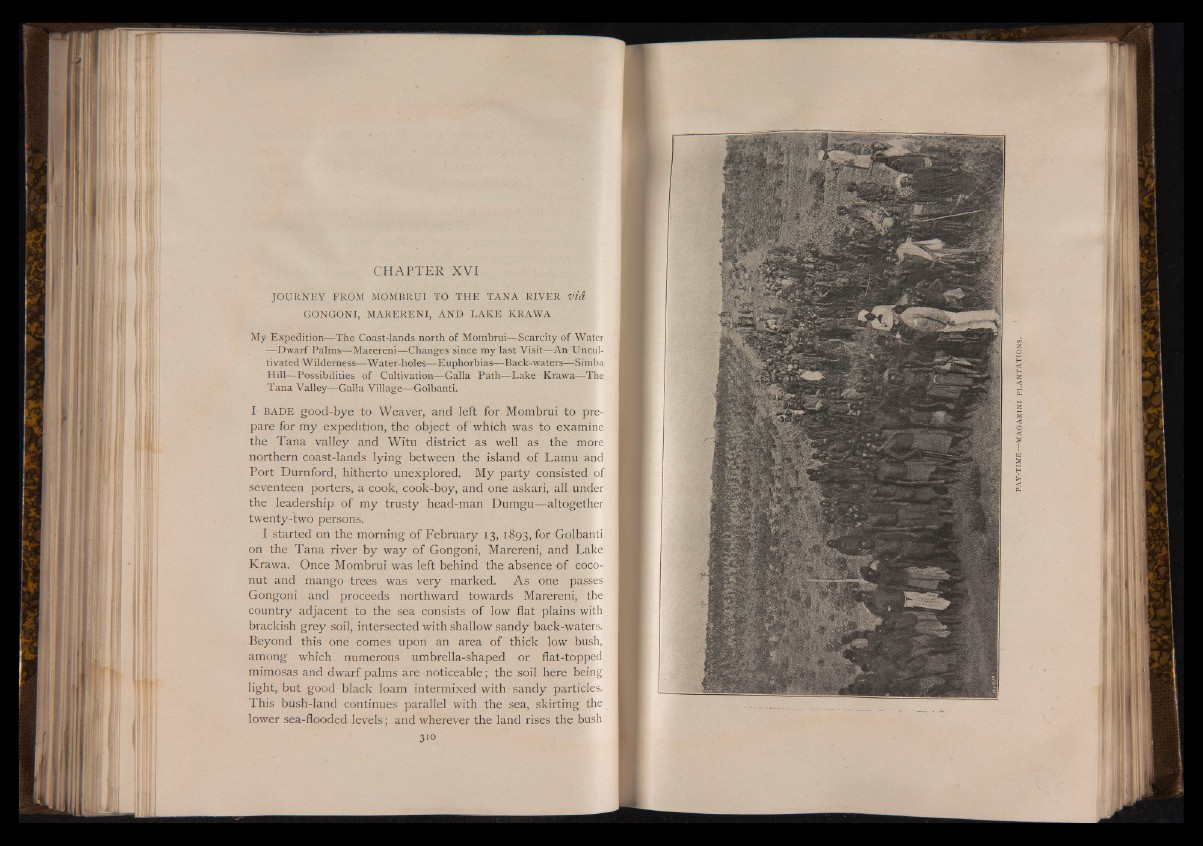
CH A P T ER XVI
JOURNEY FROM MOMBRUI TO THE TANA RIVER v id
GONGONI, MARERENI, AND LAKE ICRAWA
My Expedition— The Coast-lands north of Mombrui— Scarcity of Water
— Dwarf Palms— Marereni— Changes since my last Visit— An Uncultivated
Wilderness— Water-holes— Euphorbias— Back-waters— Simba
Hill— Possibilities of Cultivation— Galla Path— Lake Krawa— The
Tana Valley— Galla Village— Golbanti.
I BADE good-bye to Weaver, and left for Mombrui to prepare
for my expedition, the object of'which was to examine
the Tana valley and Witu district as well as the more
northern coast-lands lying between the island of Lamu and
Port Durnford, hitherto unexplored. My party consisted of
seventeen porters, a cook, cook-boy, and one askari, all under
the leadership of my trusty head-man Dumgu— altogether
twenty-two persons.
I started on the morning of February 13, 1893, for Golbanti
on the Tana river by way of Gongoni, Marereni, and Lake
Krawa. Once Mombrui was left behind the absence of coconut
and mango trees was very marked. As one passes
Gongoni and proceeds northward towards Marereni, the
country adjacent to the sea consists of low flat plains with
brackish grey soil, intersected with shallow sandy back-waters.
Beyond this one comes upon an area of thick low bush,
among which numerous umbrella-shaped or flat-topped
mimosas and dwarf palms are noticeable; the soil here being
light, but good black loam intermixed with sandy particles.
This bush-land continues parallel with the sea, skirting the
lower sea-flooded levels; and wherever the land rises the bush
310